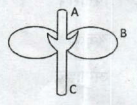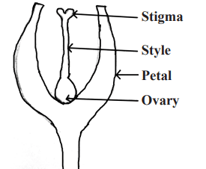Sexual Reproduction in Flowering Plants
Sexual Reproduction in Flowering Plants: Overview
This topic covers concepts, such as Sexual Reproduction in Flowering Plants, Flowers, Unisexual Flowers, Bisexual Flowers, Petals, Sepals, Stamens, Anthers, Filaments of Anthers, Pollen Grains, Carpels, Ovary of a Flower, Ovules, Style of a Flower, Stigma of a Flower, Pollination, Self-pollination, Cross-pollination, Germination of Pollen on Stigma, Pollen Tubes, Fertilization, Fertilization in Flowering Plants, Fruits, Seeds of a Plant, Seed Germination, Cotyledons, Plumule & Radicle etc.
Important Questions on Sexual Reproduction in Flowering Plants
Number of male gametes present in pollen tube are
Selected the odd one from the following :
Unisexual flowers occur in which of the following plants
Pollen grain of a plant (2n = 28) are cultured to produce callus tissues by tissue culture methods. What would be the chromosome number in the cells of callus?
Double fertilisation is characteristic of
The transfer of pollen grains from the anther to stigma is termed as
The example of the unisexual flower is
Pollen grains are produced by
Pollination in maize held by
Which of the following plant tip has quiescent centre
In the given figure parts marked A, Band C subsequently are-

The embryo sac is found in
Observe the diagrammatic representation of the longitudinal section of the flower. Select the correct statement :
Development and formation of pollen grains in anther of the stamen is known as:
The flower which contains both stamens and carpels they are called bisexual flowers. Which of the following flower pair is bisexual?
Match column I with column II and choose the correct option.
| Column A | Column B |
| (i) Salvia | (a) Wind |
| (ii) Paddy | (b) Ant |
| (iii) Vallisneria | (c) Insect |
| (iv) Fig | (d) Water |
From which of the following, endosperm is formed.
What are wind-pollinated flowers called?
In plants "Auxin” is used for
(a) division of cells
(b) ripening of fruits
(c) root growth inhibition
(d) elongation and division of cells

